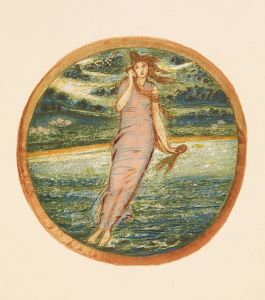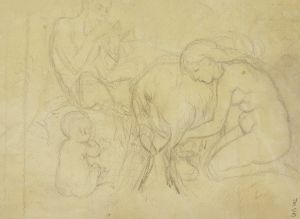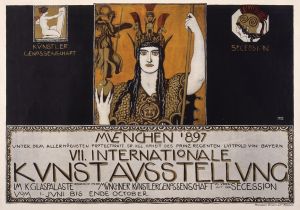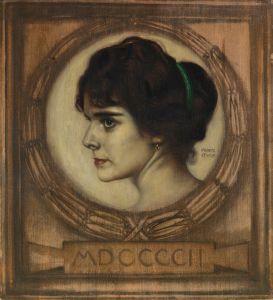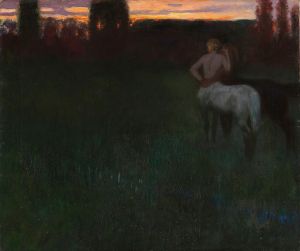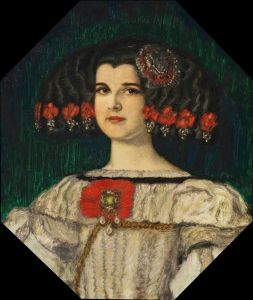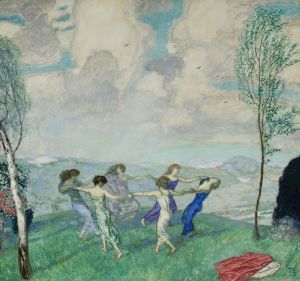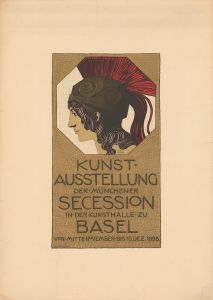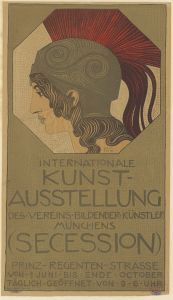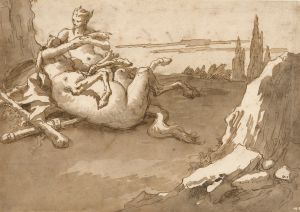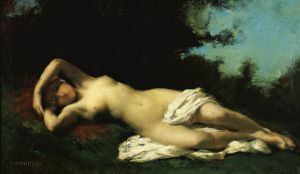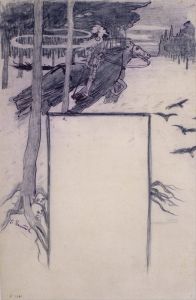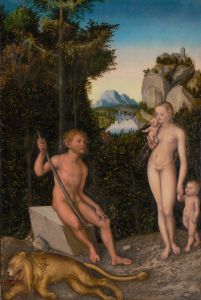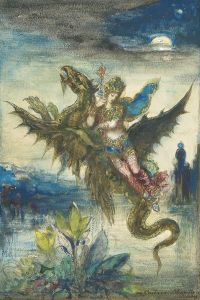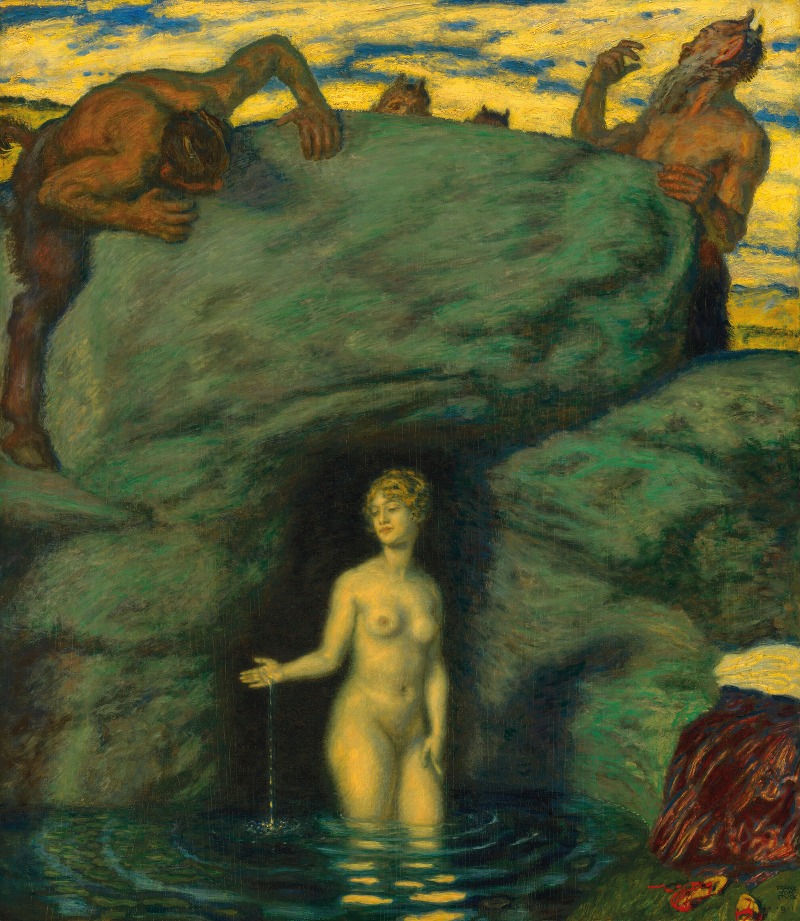
Quellnymphe von Faunen belauscht
A hand-painted replica of Franz von Stuck’s masterpiece Quellnymphe von Faunen belauscht, meticulously crafted by professional artists to capture the true essence of the original. Each piece is created with museum-quality canvas and rare mineral pigments, carefully painted by experienced artists with delicate brushstrokes and rich, layered colors to perfectly recreate the texture of the original artwork. Unlike machine-printed reproductions, this hand-painted version brings the painting to life, infused with the artist’s emotions and skill in every stroke. Whether for personal collection or home decoration, it instantly elevates the artistic atmosphere of any space.
Franz von Stuck was a prominent German painter, sculptor, and architect, known for his role in the Symbolist movement and as a founding member of the Munich Secession. One of his notable works is "Quellnymphe von Faunen belauscht" (translated as "Spring Nymph Eavesdropped by Fauns"). This painting exemplifies Stuck's fascination with mythological themes and his adeptness at capturing the interplay between light and shadow, which became a hallmark of his style.
"Quellnymphe von Faunen belauscht" is a work that delves into the mythological world, a recurring theme in Stuck's oeuvre. The painting depicts a nymph, a mythological spirit of nature typically associated with a particular location or landform, such as a river or forest. In this scene, the nymph is portrayed in a moment of vulnerability, being observed by fauns, creatures from Roman mythology that are half-human and half-goat, often associated with rustic music and the spirit of the forest.
Stuck's use of dramatic lighting and rich, earthy tones in this painting creates a sense of mystery and allure, drawing the viewer into the mythical narrative. The nymph is often depicted in a serene and graceful manner, embodying the idealized beauty and tranquility associated with these mythological beings. The fauns, on the other hand, add an element of intrigue and mischief, as they are traditionally seen as playful yet somewhat mischievous creatures.
The composition of "Quellnymphe von Faunen belauscht" reflects Stuck's academic training and his interest in classical art forms. His ability to blend these classical influences with the Symbolist movement's emphasis on emotion and imagination is evident in the way he captures the ethereal quality of the nymph and the enigmatic presence of the fauns. The painting invites viewers to explore themes of nature, mythology, and the human psyche, which were central to the Symbolist movement.
Franz von Stuck's work, including "Quellnymphe von Faunen belauscht," played a significant role in the development of modern art in Germany. His contributions to the Munich Secession, an art movement that sought to break away from traditional academic art, helped pave the way for new artistic expressions and the exploration of avant-garde ideas. Stuck's influence extended beyond his paintings, as he was also a respected teacher at the Academy of Fine Arts in Munich, where he mentored several artists who would go on to become prominent figures in the art world.
While specific details about the creation and exhibition history of "Quellnymphe von Faunen belauscht" may not be extensively documented, the painting remains an important example of Stuck's work and his contribution to the Symbolist movement. It continues to be appreciated for its artistic merit and its ability to evoke the timeless allure of mythological themes.





